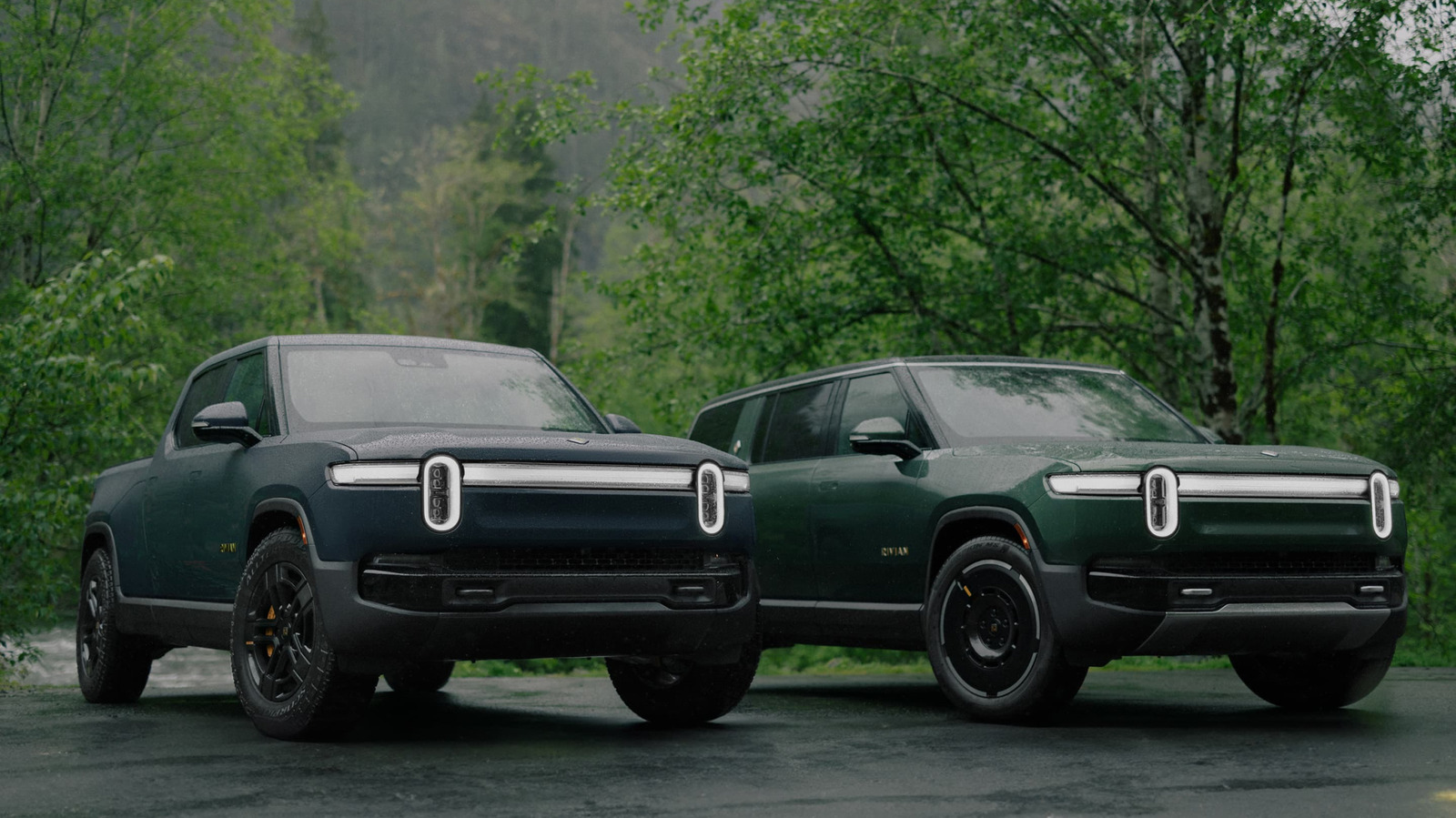The Rivian R1T (the pickup truck version) and the Rivian R1S (the SUV version) are electric vehicles constructed on a unified platform. Recently, Rivian introduced its second-generation R1 EVs, which, although they resemble the originals, have undergone significant enhancements beneath their exteriors.
Advertisement
Rivian EVs feature various combinations of at least two to as many as four electric motors situated at the front and rear of the vehicles, rendering every Rivian an all-wheel drive vehicle. These configurations are identified as the Dual-Motor, Tri-Motor (new for the second generation), and Quad-Motor setups. Unlike the first generation, where Rivian procured their Quad-Motors from Bosch, all of the motors powering the current generation of Rivians are entirely designed, engineered, and manufactured by Rivian personnel.
The entry-level Dual-Motor R1, with a motor in the front and one in the rear, delivers a power rating of 665 horsepower, sufficient to achieve a zero-to-60 mph time of 3.4 seconds in the Performance model. The Tri-Motor R1 employs two engines in the rear and one in the front, increasing the power output to 850 horsepower, reducing the zero-to-60 mph time to 2.9 seconds in the Tri-Motor R1T. Lastly, the Quad-Motor R1 boosts the power to an impressive 1,025 horsepower, which, when utilized with Rivian’s Launch Mode, results in a zero-to-60 mph time of 2.5 seconds and a quarter-mile time of 10.5 seconds.
Advertisement
What about the batteries that power the motors of the R1T and R1S?
The battery packs powering the second-generation R1 motors have also evolved, as battery technology has progressed and become more efficient. The Standard battery pack now employs lithium iron phosphate (LFP) chemistry, a cost-effective alternative to the lithium-ion batteries Rivian offers in its Large and Max battery packs. The Large and Max lithium-ion battery packs will continue utilizing 2170 cylindrical cells but now incorporate larger, lighter-weight, and more straightforward high-pressure die castings in the pack enclosure.
Advertisement
The base price of the Rivian R1 vehicles, manufactured in Normal, Illinois, is $69,900 for the R1T and $75,900 for the R1S. While the standard LFP battery is part of the base price for the Dual-Motor Rivian R1T and R1S, you can upgrade to the Large lithium-ion battery pack on the Dual-Motor for a $7,000 surcharge. Opting for the Max battery with the Dual-Motor setup will add $14,000 compared to the LFP option, or an additional $7,000 on top of the Large battery. The Tri-Motor with the Max battery will increase the Rivian’s cost by $30,000 beyond the base price.
The Quad-Motor Rivian R1 vehicles are yet to be released, with sales anticipated to begin in early 2025. Based on a September 2024 magazine test of a Quad-Motor R1S with the Max battery, the 4-motor upgrade with the largest battery is estimated to be approximately $40,000.
Advertisement
How much range does a Rivian R1T or R1S have?
The range offered by a Rivian, akin to any EV, is contingent on the selected battery pack and the number of motors incorporated into the vehicle. According to the EPA, the base LFP battery pack grants a range of 258 miles with the Dual-Motor setup on both the R1T and R1S. Rivian has proposed estimates for some other configurations. With the Large battery pack, Rivian projects a 330-mile range for both vehicles. Moving to the Max battery pack with the Dual-Motor, Rivian predicts 420 miles for the R1T and 410 miles for the R1S.
Advertisement
The Tri-Motor and the Max battery pack have a quoted range of 371 miles according to Rivian. The Quad-Motor Rivians prioritize performance, reflected in their real-world range of 274 miles tested during the aforementioned R1S magazine review. Rivian’s estimate? Up to 355 miles. Your mileage may vary…




